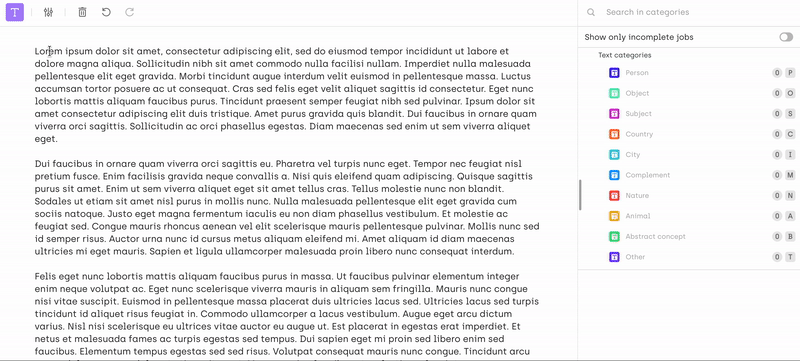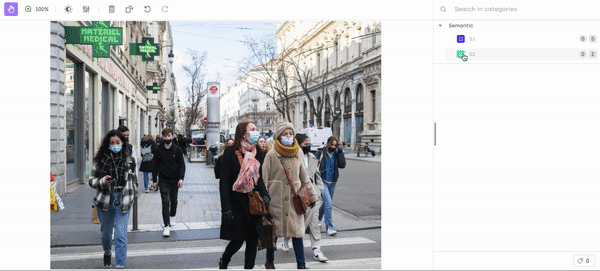June 7th, 2023
over 2 years ago by Kili Technology
Changelog (v2.134.0)
New
- [Labeling] We’re introducing a new annotation flow, where you can first pick the tool from the toolbar, and then complete all the related jobs directly from a floating menu.
This flow can be particularly useful if, for instance, you are dealing with a large number of categories, because it allows you to add annotations from different categories without having to search for them in the job viewer tab.
This feature is available in all interfaces (Text, Video, Image, PDF) and all tools, except segmentation and pose estimation.

-
[Labeling] In the text and Image labeling interfaces, links between NER annotations can now be visualized using arrows. This means enhanced visibility, less confusion and increased labeling speeds. To see the details of a particular relation, hover over a relation marker. You can also decide to make all the relations visible, using the new option in the display settings menu.
To see the details of a relation, hover over a relation marker.
You can also decide to make all the relations visible/invisible, using the new option in the display settings menu.

- [Labeling] When using Interactive segmentation on semantic tasks, additionally to the Point tool, you can now simply draw a bounding box around the object. When you use a bbox, you can more accurately target the objects that you want to annotate.

Changed
- [Python SDK] We’ve added a new tutorial on how to convert a Tagtog project to a Kili project. We’re also releasing a refreshed version of our tutorial on importing rich text assets to Kili.
- [Python SDK] The label parsing feature has been integrated to
kili.assets(). You can request automatic label parsing usingkili.assets(label_output_format="parsed_label"). For more information, refer to our SDK documentation. - [Python SDK] We’ve added the
origin_locationparameter to the methods in thekili.utils.labelsmodule. Use this parameter to specify the point coordinate system origin location. For more information, refer to our SDK documentation. - [Python SDK] Cloud storage mutations (
add_cloud_storage_connectionandsynchronize_cloud_storage_connection) now support all types of data integrations that you can use with Kili. - [Filtering] You can now filter displayed assets by who the asset was assigned to. This will provide extra precision needed to pinpoint issues and highlight areas of special interest in your project.
- [Filtering] You can now filter assets using the new
No valuefield to find assets with unfinished non-mandatory fields. This works for all labeling jobs, excluding transcription jobs.
Fixed
- [Labeling] In Interactive Segmentation, holes in masks were being displayed as annotations (colors used suggested that additional masks were added on top of an existing mask, rather than the absence of a mask). We’ve fixed this issue.
- [Labeling] Masks drawn using Interactive Segmentation were sometimes overlapping with existing masks even when the
Draw over existing objectsoption was deactivated. We’ve fixed this issue. - [Labeling] PDFs containing CMAP tables with certain special characters didn’t render properly. We’ve fixed this issue
- [Python SDK] The
bbox_points_to_normalized_verticesmethod of thekili.utils.labelsmodule used to flip the processed bounding boxes upside down. We’ve fixed this issue.